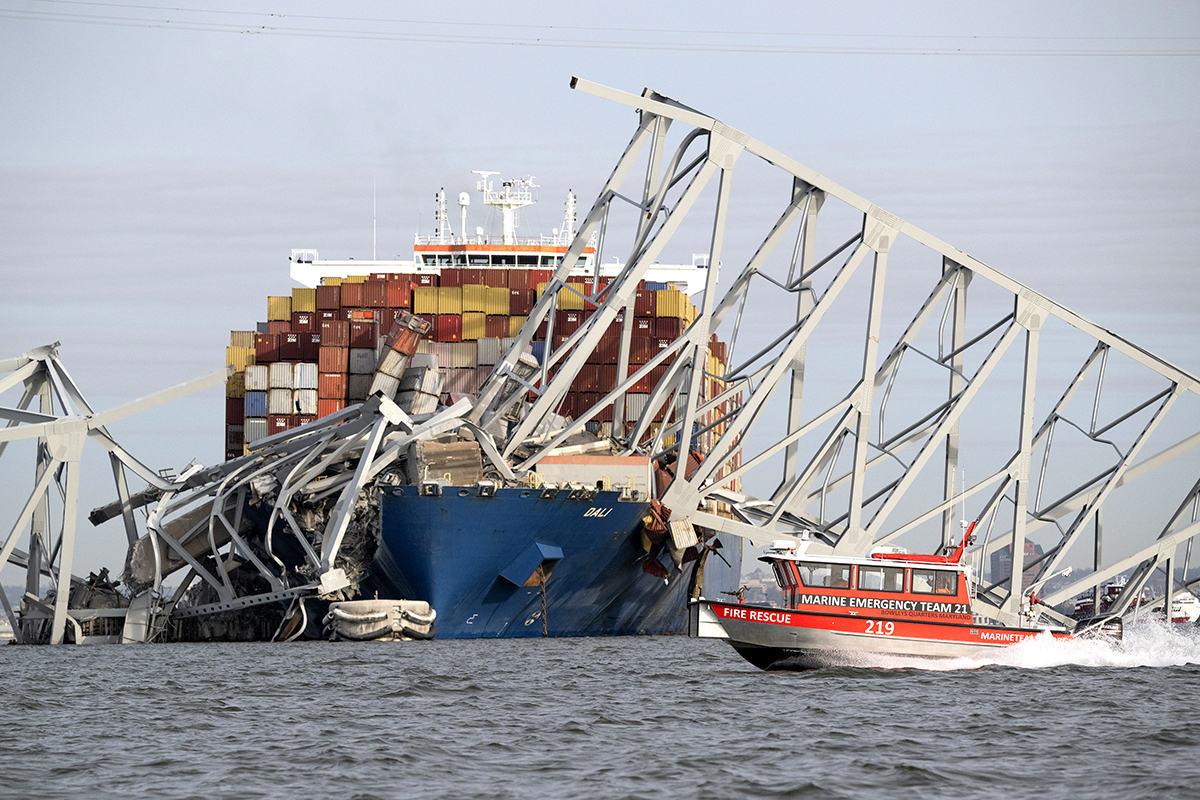On March 26, 2024, the Francis Scott Key Bridge in Baltimore collapsed after the cargo ship Dali struck one of its piers. This catastrophic event, caused by a series of mechanical failures and operational missteps, has sparked widespread scrutiny of maritime safety protocols and infrastructure resilience.
The preliminary National Transportation Safety Board (NTSB) investigation revealed that multiple electrical issues aboard the Dali, compounded by its massive size and operational challenges, set the stage for this disaster.
How It Happened
The Panamanian-flagged Dali, a 984-foot cargo ship, was preparing to leave the Port of Baltimore when it suffered electrical malfunctions. The day before the incident, the vessel experienced two power outages while still in port. As it began its transit, a complete blackout occurred, attributed to tripped electrical breakers.
NTSB investigators pinpointed a loose cable in the ship’s electrical system as the likely cause of the failures. Despite the crew's efforts to restore power, the ship lost propulsion. Moments before the collision, the Dali issued a mayday call, but it was too late to avoid disaster.
The ship struck a pier of the Francis Scott Key Bridge, causing a massive collapse. Fortunately, authorities had closed the bridge to traffic before the collision, preventing a significant loss of life.
The Aftermath: Economic and Environmental Costs
The cleanup and recovery efforts have cost over $100 million, with expenses still mounting (WorkBoat). The main shipping channel, critical to Baltimore's economy, was closed for weeks as debris removal teams worked to clear the wreckage (WorkBoat).
Environmental concerns have also emerged, with advocates warning of potential long-term damage to the Chesapeake Bay due to sediment disturbances and contamination during cleanup efforts.
Liability and Legal Battles
The collapse has triggered legal disputes over liability. Maritime insurers, shipowners, and the city of Baltimore are engaged in negotiations, with potential settlements likely to reach staggering sums (WorkBoat).
Structural and Policy Failures
Experts argue that the incident highlights systemic issues in maritime operations and U.S. port infrastructure. Critics note that aging bridges, like the Francis Scott Key Bridge, are increasingly vulnerable to collisions involving modern mega-ships (WorkBoat).
The disaster also underscores the importance of tug assist regulations and operational safeguards. Calls for updated tug escort rules and stricter oversight of large vessels in confined waterways have gained traction in the wake of the incident (WorkBoat).
Lessons from the Dali Incident
The Key Bridge disaster is part of a troubling trend in maritime incidents. Recent years have seen an increase in towboat allisions and collisions, prompting calls for better crew training and stricter maintenance protocols (WorkBoat).
Some critics blame Baltimore officials for prioritizing port expansion and economic growth over safety precautions. The incident may have been preventable with better risk assessment and infrastructure investments (WorkBoat).
What’s Next for Maritime Safety?
As the NTSB continues its investigation, the maritime industry is bracing for potential reforms. Proposed changes include mandatory tug escorts for large vessels, enhanced crew training, and comprehensive inspections of aging infrastructure (WorkBoat).
The collapse of the Francis Scott Key Bridge serves as a wake-up call for policymakers and industry leaders. Ensuring the safety of critical infrastructure must remain a top priority as shipping volumes and vessel sizes continue to grow.





